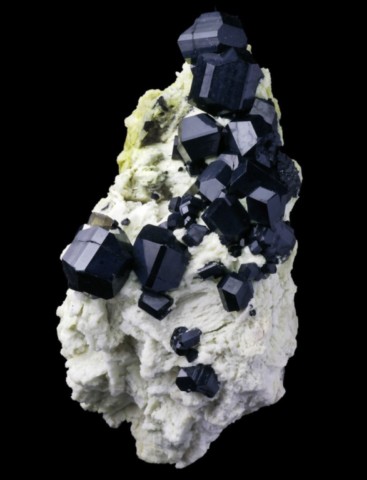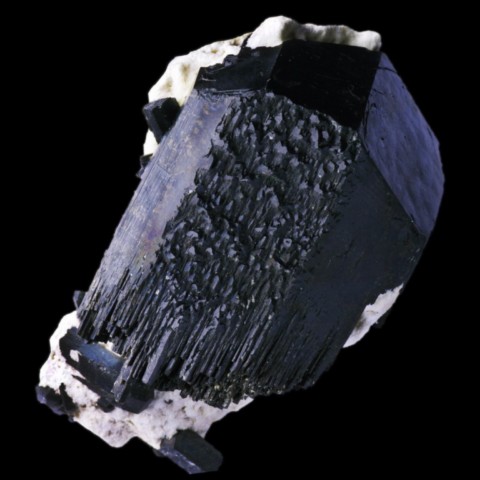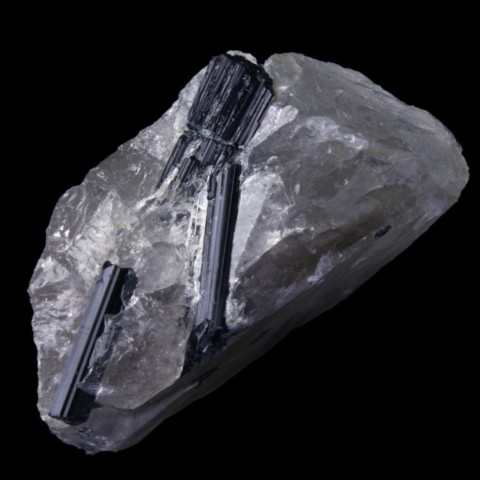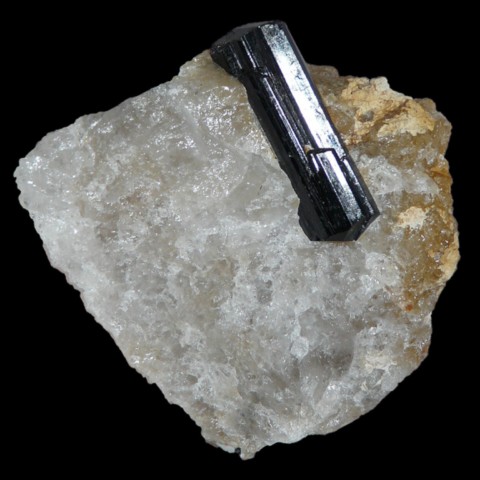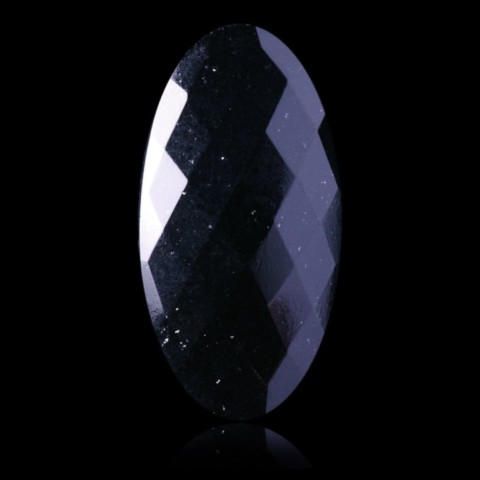SCHORL
Class : Silicates
Subclass : Cyclosilicates
Crystal system : Trigonal
Chemistry : NaFe3Al6(BO3)3Si6O18(O,F,OH)4
Rarity : Very common
Schorl (or schorlite) is black tourmaline, the most common mineral of the tourmaline group. It is found mainly in granitic pegmatites, with quartz, feldspar and micas, but also in certain metamorphic rocks (often in relation to granitic intrusions), and in certain pneumatolytic deposits with tin or tungsten. Very resistant to alteration, it is also frequently found in alluvium. Its name is of uncertain origin and seems to derive from the German mining term "schurl", which designated small black stones, impurities rejected during the washing of gold and tin ores. Generally well crystallized, schorl forms elongated prisms that are strongly striated according to the elongation, sometimes of very large dimensions (up to 2 meters), with a triangular section with curved edges and pyramidal terminations. The crystals are also frequently acicular, grouped in felted aggregates or in parallel or radiate groupings. The crystals are often broken and cemented by later minerals (especially quartz). Schorl is black in color, translucent in brown in fine splinters. It is cut for jewelry.
Main photo : Schorl from Erongo Mountains, Usakos, Namibia
Schorl in the World
Twinning
Rare twinning is known on {10-10} and on {40-41}.
Fakes and treatments
No fakes listed for this mineral species.
Hardness : 7
Density : 3.18 to 3.22
Fracture : Irregular to sub-conchoidal
Streak : Gray-white
TP : Translucent to opaque
RI : 1.635 to 1.672
Birefringence : 0.025
Optical character : Uniaxial -
Pleochroism : Strong
Fluorescence : None
Solubility : Insoluble
Magnetism : ParamagneticRadioactivity : None

